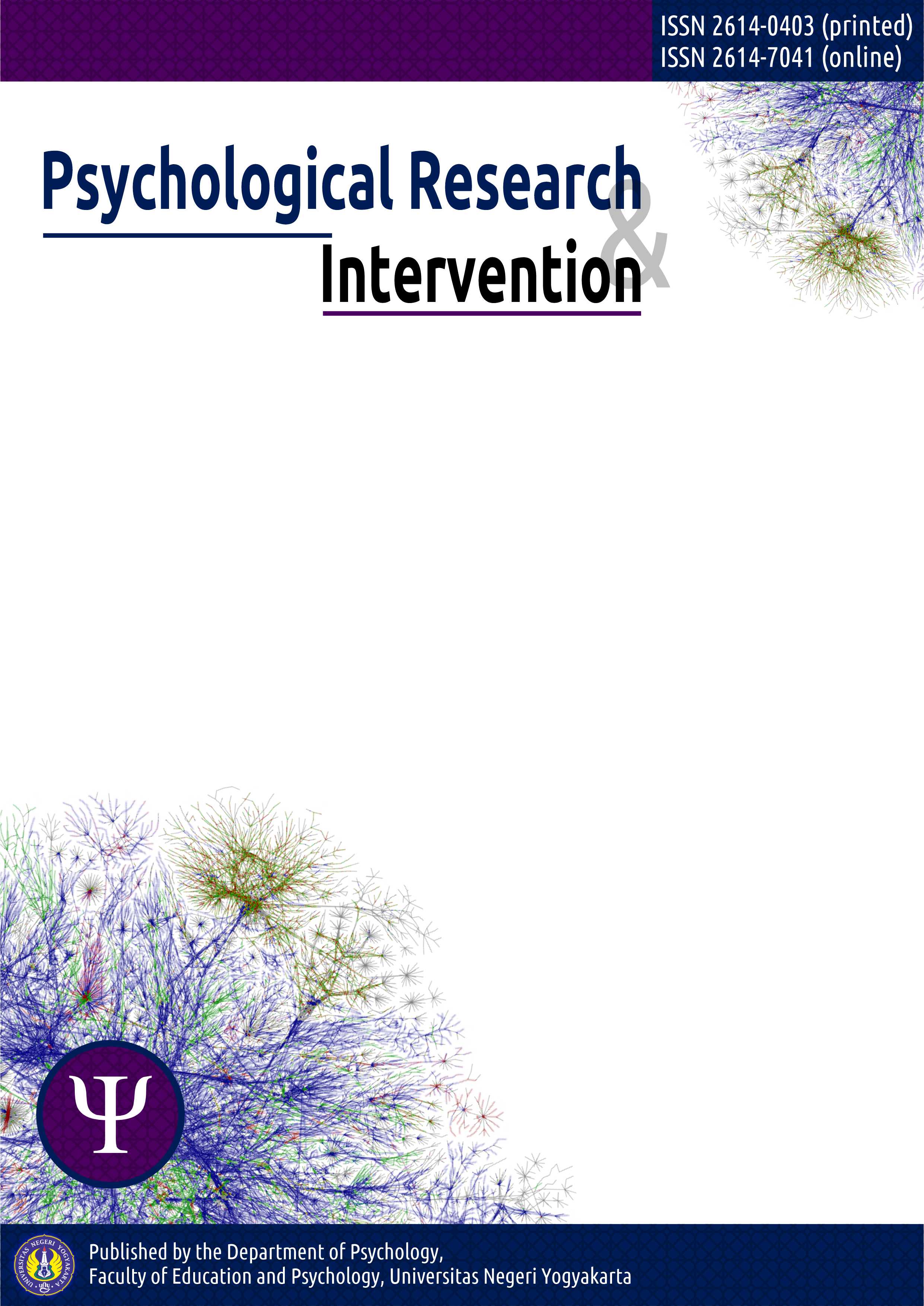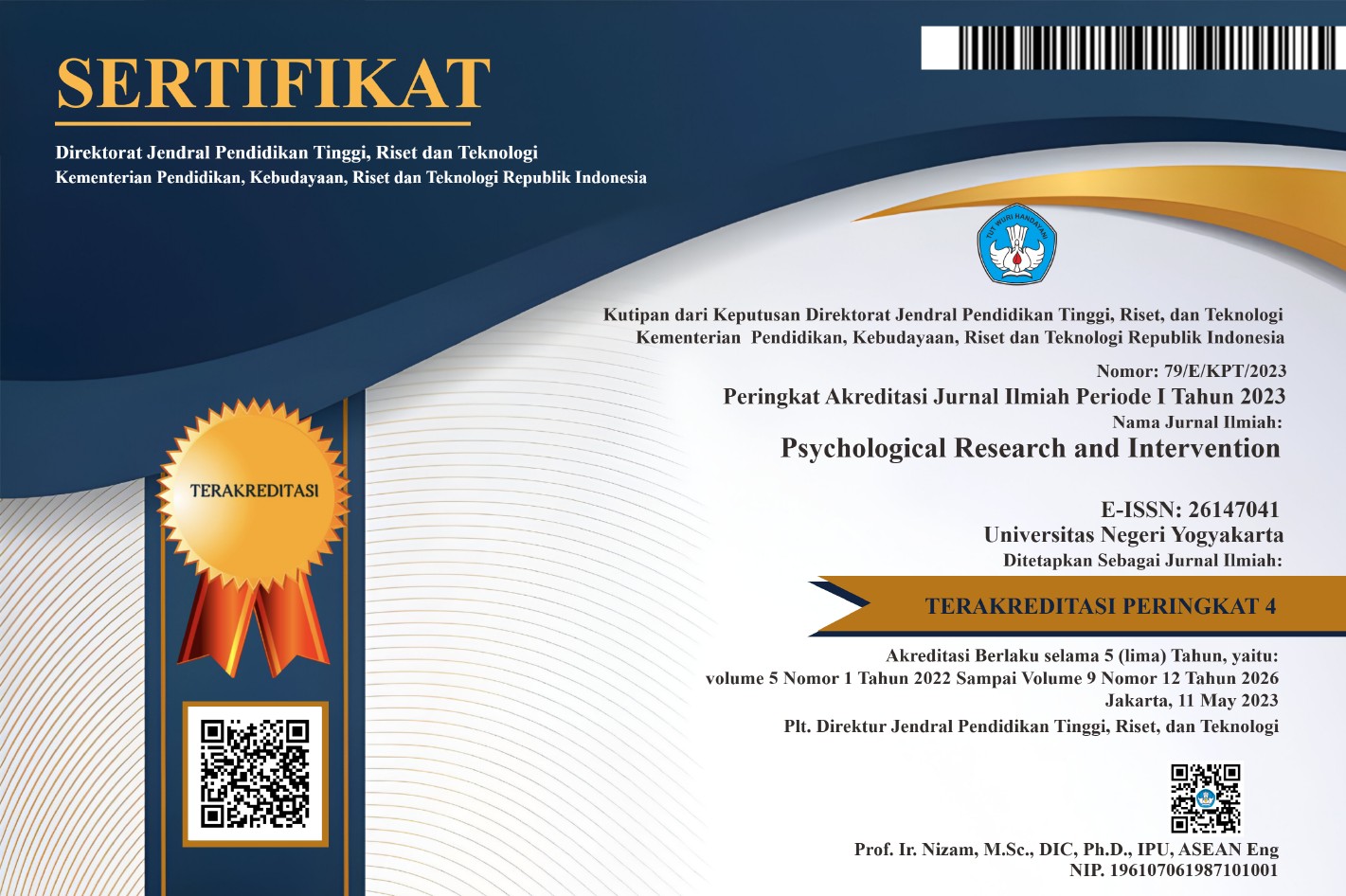Comparing the pace of life of a city: Size and average temperature as predictors
DOI:
https://doi.org/10.21831/pri.v5i1.50292Keywords:
pace of life, temperature, population, central business districtAbstract
Pace of life has been found to be associated with various life outcomes such as mental health and well-being to information distribution and economic development. Every city has a different pace of life due to its specific characteristics. Across two studies, we examined the role of temperature and number of populations (city size) as the predictors of pace of life. In the first study, we compared Bandung and Jakarta and in the second study, we compared Jakarta and Depok. Each pace of life index was generated by mean scores of walking speed, working speed and clock accuracy. Through field observation in each city's Central Business District, we found that based on temperature, Jakarta has higher means of walking speed (M=15.3) compared to Bandung (M=13.6), significantly with mean difference 1.71 (t(158)=5.32, p<.001, d=0.841). Jakarta is also significantly higher on the working speed indicator (M=25.7) compared to Bandung (M=17.5) with mean difference 8.22 (t(18)=2.49, p=.011). In the second study, we found that Jakarta has significantly lower means of walking speed (M=14.3) compared to Depok (M=17.9) with mean difference 3.54, t(158)=11.058, p<.001. Similarly, Jakarta also has lower means of working speed (M=18.58) and clock accuracy (M=1.33) compared to Depok (M working speed=19.9, M clock accuracy=3.67), although not significant. Overall, as predicted, based on temperature, the colder city Bandung has a faster pace of life compared to Jakarta. Jakarta also has a faster pace of life compared to Bandung, although significant only for its walking speed.References
Amato, P. R. (1983). The effect of urbanization on interpersonal behavior. Journal of Cross-Cultural Psychology, 14(3), 353–367.
Badan Pusat Statistik Kota Depok, . (2018, Juli 20). Jumlah Penduduk dan Rasio Jenis Kelamin Menurut Kecamatan di Kota Depok 2017. Retrieved November 24, 2018, from Badan Pusat Statistik Kota Depok: https://depokkota.bps.go.id/dynamictable/2018/07/20/18/jumlah-penduduk-dan-rasio-jenis-kelamin-menurut-kecamatan-di-kota-depok-2017.html
Cozby, P. C., & Bates, S. C. (2015). Methods in Behavioral Research (12th ed.). New York: McGraw-Hill.
DetikFinance, (2013, Desember 10). Detik.com. Retrieved Desember 24, 2018, from Wow Harga Tanah di SCBD Tembus Harga Rp 150-200 Juta/Meter: https://finance.detik.com/properti/d-2438023/wowharga-tanah-di-scbd-tembus-rp 150-200-jutameter
Garhammer, M. (2002). Pace of life and enjoyment of life. Journal of Happiness Studies, 3(May), 217–256.
Goldbach, C., Hoffmann, C., Hoppe, J., Pitz, T., & Thommes, K. (2020). The fast and the furious"”An experimental investigation of the pace of life and risky speed choice in traffic. PloS one, 15(7), e0236589.
Gross, A. J., Murthy, D., & Varshney, L. R. (2017). Pace of life in cities and the emergence of town tweeters. SAGE Open, 1–15. https://doi.org/10.1177/2158244017745113
Heal, G., & Park, J. (2013). Feeling the heat: Temperature, physiology, and the wealth of nations. NBER Working Paper Series.
Hoffmann, C., Hoppe, J. A., & Ziemann, N. (2021). The Hare and the Hedgehog: Empirical evidence on the relationship between the individual Pace of Life and the speed-accuracy continuum. PloS one, 16(8), e0256490.
Hoffmann, C., Hoppe, J. A., & Ziemann, N. (2022). Faster, harder, greener? Empirical evidence on the role of the individual Pace of Life for productivity and pro-environmental behavior. Ecological Economics, 191, 107212.
Katadata.co.id, . (2018, Januari 25). Berapa Kepadatan Penduduk di DKI Jakarta? Retrieved November 24, 2018, from Katadata.co.id: https://databoks.katadata.co.id/datapublish/2018/01/25/berapa-kepadatan-penduduk-di-dki-jakarta
Lan, L., Wargocki, P., & Lian, Z. (2014). Thermal effects on human performance in office environment measured by integrating task speed and accuracy. Applied Ergonomics, 45(3), 490–495. https://doi.org/10.1016/j.apergo.2013.06.010
Lester, D. (1999). Pace of life and suicide. Perceptual and Motor Skills.
Levine, R. V, & Bartlett, K. (1984). Pace of life, punctuality, and coronary heart disease in six countries. Journal of Cross-Cultural Psychology, 15(2), 233–255.
Levine, R. V, & Norenzayan, A. (1999). The pace of life in 31 countries. Journal of Cross-Cultural Psychology, 30(2), 178–205.
Lippke, S., Schalk, T. M., Kí¼hnen, U., & Shang, B. (2021). Pace of life and perceived stress in international students. PsyCh Journal, 10(3), 425-436.
Melnikov, V. R., Krzhizhanovskaya, V. V., Lees, M. H., & Sloot, P. M. (2020). The impact of pace of life on pedestrian heat stress: A computational modelling approach. Environmental research, 186, 109397.
Ozgunen, K. T., Kurdak, S. S., Maughan, R. J., Zeren, C., Korkmaz, S., Yazici, Z., ... Dvorak, J. (2010). Effect of hot environmental conditions on physical activity patterns and temperature response of football players. Scandinavian Journal of Medicine & Science in Sport, 20(3), 140–147. https://doi.org/10.1111/j.1600-0838.2010.01219.x
Paiva, D., Cachinho, H., & Barata-salgueiro, T. (2017). The pace of life and temporal resources in a neighborhood of an edge city. Time & Society, 26(1), 28–51.
https://doi.org/10.1177/0961463X15596704
Sugianto, Danang (2017, Maret 10). Detik.com. Retrieved Desember 24, 2018, from Menakar Harga Tanah di Jakarta: https://finance.detik.com/properti/d-3460845/menakar-harga tanah-di-jakarta
Utami, W. S., & Kurniawati, A. (2018). Wilayah Perkotaan. Retrieved from Risetdikti: http://ppg.spada.ristekdikti.go.id/pluginfile.php/21029/mod_resource/content/3/MP%2006%20-%20WILAYAH%20PERKOTAAN.pdf
Vedula, S., & Kim, P. H. (2018). Marching to the beat of the drum: the impact of the pace of life in US cities on entrepreneurial work effort. Small Business Economics, 50(3), 569-590.
Walmsley, D. J., & Lewis, G. J. (1989). The Pace of Pedestrian Flows in Cities. Environment and Behavior.
Yaguang, S. (2011). Development and characteristics of central business district under the philosophy of health. Procedia Engineering, 21, 258–266. https://doi.org/10.1016/j.proeng.2011.11.2013
Yeganeh, A. J., Reichard, G., McCoy, A. P., & Bulbul, T. (2018). Correlation of ambient air temperature and cognitive performance: A systematic review and meta-analysis. Building and Environment, 143(July), 701–716. https://doi.org/10.1016/j.buildenv.2018.07.002












